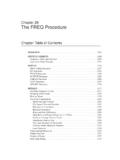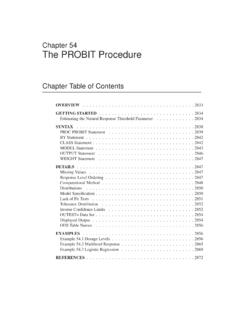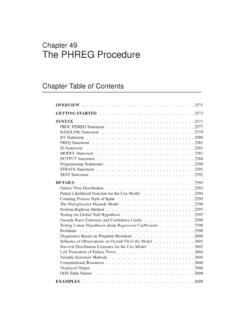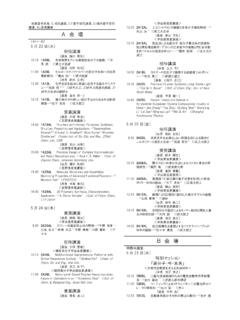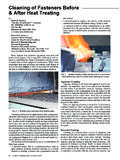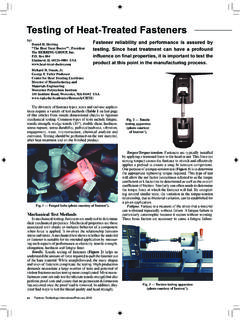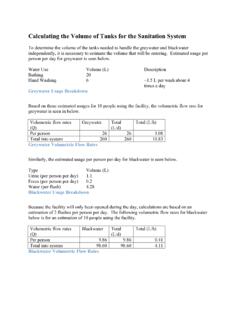Transcription of The PLAN Procedure - Worcester Polytechnic Institute
1 Chapter 50 The plan ProcedureChapter Table of Assigning Subjects to Treatments ..2669 TREATMENTSS tatement ..2673 SpecifyingFactorStructures ..2675 Randomizing Designs ..2678 DisplayedOutput ..2678 ODST ableNames .. A Split-Plot Design .. Chapter 50. The plan ProcedureSAS OnlineDoc : Version 8 Chapter 50 The plan ProcedureOverviewThe plan Procedure constructs designs and randomizes plans for factorial exper-iments, especially nested and crossed experiments and randomized block plan can also be used for generating lists of permutations and combinationsof numbers.
2 The plan Procedure can construct the following types of experimentaldesigns: full factorials, with and without randomization certain balanced and partially balanced incomplete block designs generalized cyclic incomplete block designs Latin square designsFor other kinds of experimental designs, especially fractional factorial, response sur-face, and orthogonal array designs, refer to the FACTEX and OPTEX procedures andthe ADX Interface in SAS/QC plan generates designs by first generating a selection of the levels for the firstfactor. Then, for the second factor, PROC plan generates a selection of its levelsfor each level of the first factor.
3 In general, for a given factor, the plan proceduregenerates a selection of its levels for all combinations of levels for the factors thatprecede it. The selection can be done in five different ways: randomized selection, for which the levels are returned in a random order ordered selection, for which the levels are returned in a standard order everytime a selection is generated cyclic selection, for which the levels returned are computed by cyclically per-muting the levels of the previous selection permuted selection, for which the levels are a permutation of the integers1;:::;n combination selection, for which themlevels are selected as a combination ofthe integers1.
4 Ntakenmat a time2662 Chapter 50. The plan ProcedureThe randomized selection method can be used to generate randomized plans. Also,by appropriate use of cyclic selection, any of the designs in the very wide class ofgeneralized cyclic block designs (Jarrett and Hall 1978) can be is no limit to the depth to which the different factors can be nested, and anynumber of randomized plans can be can also declare a list of factors to be selected simultaneously with the lowest(that is, the most nested) factor. The levels of the factors in this list can be seenas constituting the treatment to be applied to the cells of the design.
5 For this reason,factors in this list are calledtreatments. With this list, you can generate and randomizeplans in one run of PROC StartedThree Replications with Four FactorsSuppose you want to determine if the order in which four drugs are given affectsthe response of a subject. If you have only three subjects to test, you can use thefollowing statements to design the plan seed=27371;factors Replicate=3 ordered Drug=4;run;These statements produce a design with three replicates of the four levels of the factorDrugarranged in random order.
6 The three levels ofReplicateare arranged in order,as shown in Figure plan ProcedureFactor Select Levels OrderReplicate 3 3 OrderedDrug 4 4 RandomReplicate --Drug-132412124334123 Figure Replications and Four FactorsYou may also want to apply one of four different treatments to each cell of this plan (for example, applying different amounts of each drug). The following statementscreate the output shown in Figure Replicate=3 ordered Drug=4;treatments Treatment=4;run.
7 SAS OnlineDoc : Version 8 Randomly Assigning Subjects to Treatments 2663 The plan ProcedurePlot FactorsFactor Select Levels OrderReplicate 3 3 OrderedDrug 4 4 RandomTreatment FactorsFactor Select Levels OrderTreatment 4 4 RandomReplicate --Drug- --Treatment--1 3124 2 1 3 42 4321 4 1 2 33 3241 1 4 2 3 Figure the TREATMENTS StatementRandomly Assigning Subjects to TreatmentsYou can use the plan Procedure
8 To design a completely randomized design. Supposeyou have 12 experimental units, and want to assign one of two treatments to eachunit. Use a DATA step to store the unrandomized design in a SAS data set, then callPROC plan to randomize it by specifying one RANDOM factor of 12 levels. Thefollowing statements produce Figure and Figure :title Completely Randomized Design ;/* The unrandomized design */data a;do unit=1 to 12;if (unit <= 6) then treat=1;else treat=2;output;end;run;/* Randomize the design */proc plan seed=27371;factors unit=12;output data=a out=b;run;proc sort data=b;by unit;proc print;run;Figure shows that the 12 levels of theunitfactor have been randomly reorderedand then lists the new OnlineDoc : Version 82664 Chapter 50.
9 The plan ProcedureCompletely Randomized DesignThe plan ProcedureFactor Select Levels Orderunit 12 12 Random----------------unit-------------- -851462127391011 Figure Completely Randomized Design for Two TreatmentsAfter the data is sorted by theunitvariable, the randomized design is displayed inFigure Randomized DesignObs unit treat11 122 133 244 155 166 177 288 199 210 10 211 11 212 12 2 Figure Completely Randomized Design for Two TreatmentsYou can also generate the plan by using a TREATMENTS statement instead of aDATA step.
10 The following statements generate the same plan seed=27371;factors unit=12;treatments treat=12 cyclic (1 1 1 1 1 1 2 2 2 2 2 2);output out=b;run;SAS OnlineDoc : Version 8 PROC plan Statement 2665 SyntaxThe following statements are available in PROC plan <options>;FACTORS factor-selections</NOPRINT>;OUTPUT OUT=SAS-data-set<factor-value-settings>;TREATMENTS factor-selections;To use PROC plan , you need to specify the PROC plan statement and at least oneFACTORS statement before the first RUN statement. The TREATMENTS statement,OUTPUT statement, and additional FACTORS statements can appear either beforethe first RUN statement or after it.


